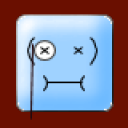1 Answer
Dystonia
Dystonia is the term used to describe involuntary muscle contractions that cause slow and repetitive movements. The head and neck area, the trunk of the body, and the extremities are the parts of the body that are most often affected, according to the UCLA Health System (UCLA Health System, 2009).
These movements can:
- be repetitive
- cause twisting motions in one or more parts of the body
- cause a person to adopt abnormal postures
While this problem can be relatively mild, it may also be severe enough to affect overall quality of life.
Types of Dystonia
According to the Mayo Clinic, instances of dystonia are often placed into one of the following three categories: focal, generalized, and segmental (Mayo Clinic, 2012).
Focal
This is the most common type. It affects just one part of the body.
Generalized
This type affects the majority of or the entire body.
Segmental
This type affects more than one area of the body in the same proximity.
What Causes Dystonia?
The exact cause is unknown. However, doctors believe that certain medical conditions, genetics, or damage to the brain may be linked to this condition.
Conditions Linked
Certain medical conditions that affect brain and nerve function are closely associated with dystonia. They include:
- encephalitis (inflammation or swelling in the brain)
- cerebral palsy
- Parkinson’s disease
- Huntington’s disease
- Wilson’s disease
- tuberculosis
- brain injury
- stroke
- brain tumor
- brain injury during birth
- carbon monoxide poisoning
- heavy metal poisoning
Other Causes
Other factors known or believed to lead to uncontrolled muscle movement are:
- side effects of or reactions to certain anti-psychotic medications
- insufficient oxygenation of tissues and organs
- inherited genes and/or genetic changes
- disrupted communication between nerve cells in the brain
How Is Dystonia Diagnosed?
In many cases, dystonia is an ongoing symptom that may remain stable over time. However, the UCLA Health System recommends making an appointment to see your doctor in the following situations:
- there is no clear explanation for the dystonia
- your symptoms become worse over time
- you are experiencing other symptoms in addition to dystonia (UCLA Health System, 2009)
Before Your Doctor’s Visit
It may be helpful to take a few notes about the symptoms you are experiencing. Include when the uncontrolled movements began, if they are constant, and if contractions are worse at certain times. For example, symptoms may flare up only after strenuous exercise.
You should also find out whether there is a history of dystonia in your family if this is something you don’t know.
During Your Doctor’s Visit
Your doctor will most likely take a thorough health history and perform a detailed physical exam. He or she will focus on muscle and nerve function. He or she will note:
- medication history
- recent illnesses
- past and recent or injuries
- recent stressful events
Your doctor may decide you should see a neurologist to diagnose the underlying cause of your condition. Tests that may be used to form a diagnosis include:
- blood or urine tests, to determine if toxins are present
- computed tomography (CT) scan, to view detailed structure of brain
- magnetic resonance imaging (MRI), to view physical changes in the brain
- electromyogram (EMG), to measure electrical activity in the muscles
- electro encephalogram (EEG), to record electrical activity in the brain
- spinal tap, to test a sample of cerebrospinal fluid
- genetic studies
How Is Dystonia Treated?
There is no cure for dystonia. However, certain medications can help manage your symptoms.
Treatment Options
Botulinum Toxin Type A (Botox) Injections
Botox injections delivered to targeted muscle groups can help ease or eliminate muscle contractions. This type of treatment requires injections every three months. Side effects include fatigue, dry mouth, and changes in voice.
Oral Medications
Medications that affect the neurotransmitter dopamine may also improve symptoms. Dopamine controls the brain’s pleasure centers and regulates movement.
Physical Therapy
Massage, heat treatment, and low-impact exercises may help manage symptoms.
Alternative Treatments
Research on the topic is limited. However, some people have found relief by practicing certain alternative therapies, such as:
- acupuncture: an ancient practice that inserts small, thin needles into various points on the body for pain relief
- yoga: exercise that combines gentle stretching movements with deep breathing and meditation
- biofeedback: electrical sensors monitor body functions and help identify ways to control muscle tension and blood pressure
Are There Any Complications Related to Dystonia?
Severe dystonia can cause a number of potential complications, such as:
- physical deformities, which may become permanent
- varying levels of physical disability
- abnormal positioning of the head
- problems swallowing
- difficulty with speech
- issues with jaw movement
- pain
- fatigue
http://www.healthline.com/symptom/slow-movements
| 11 years ago. Rating: 2 | |

 hotmamma44@hotmail.c
hotmamma44@hotmail.c
 country bumpkin
country bumpkin




